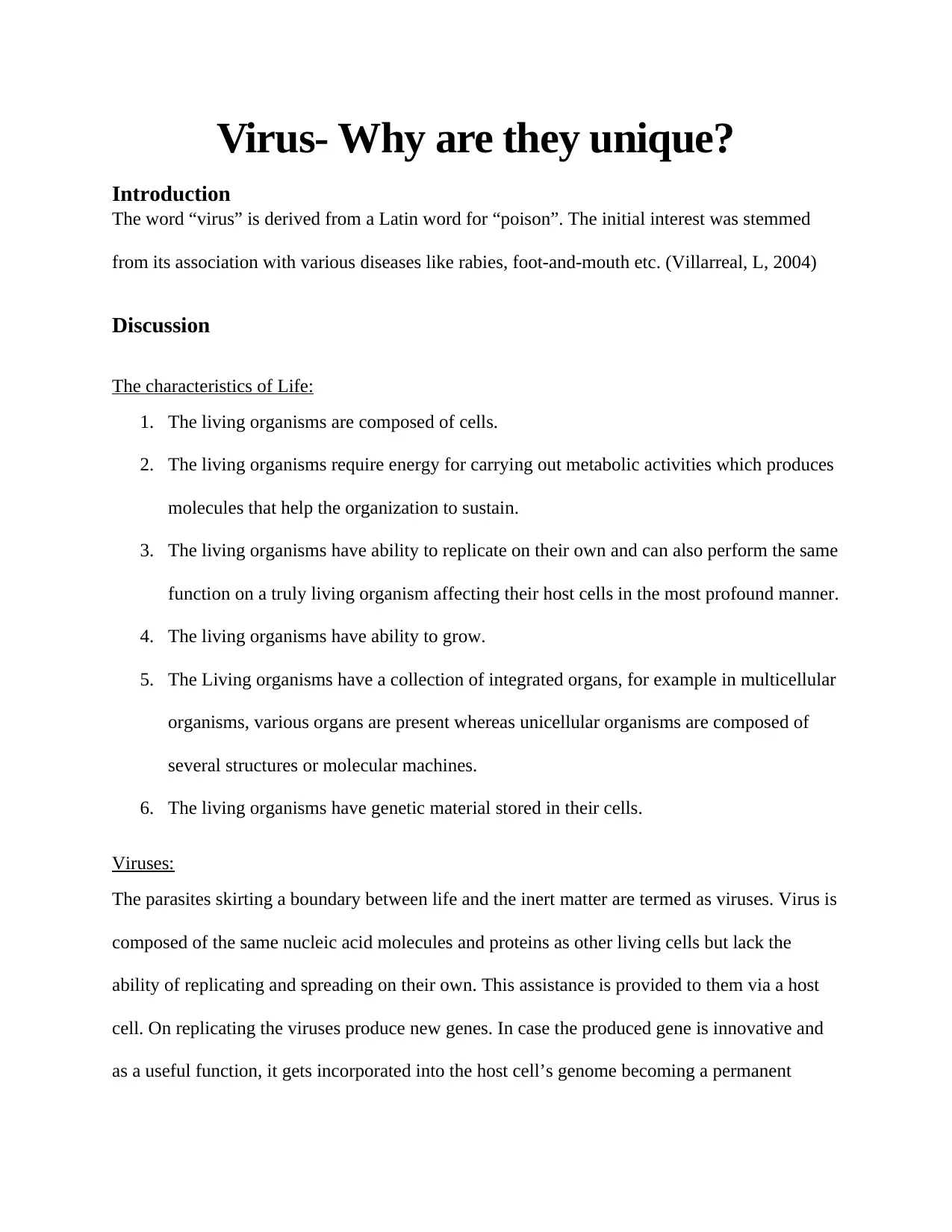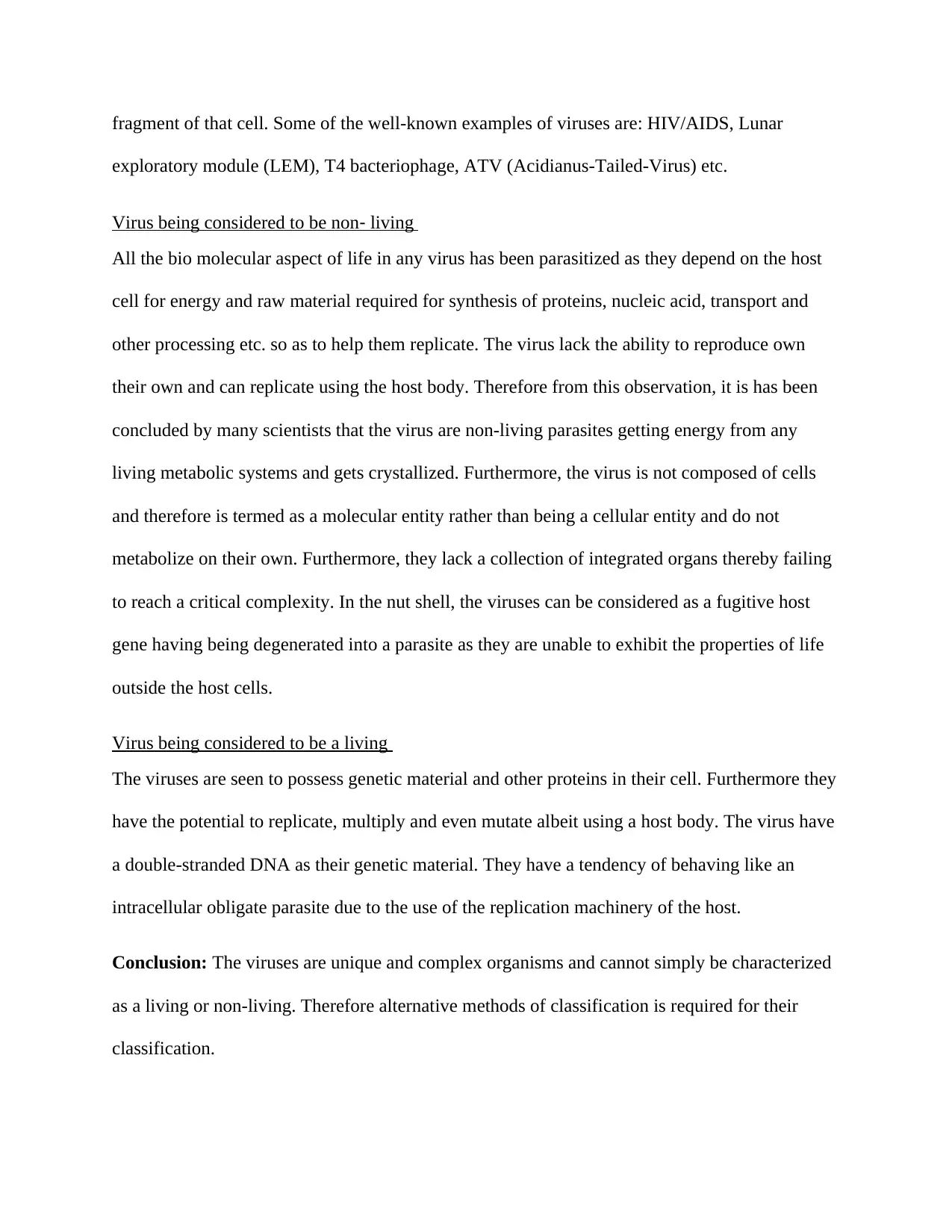A Biology Essay on the Unique Characteristics of Viruses
VerifiedAdded on 2019/10/18
|3
|626
|352
Essay
AI Summary
This essay explores the unique and complex nature of viruses, examining their characteristics and the ongoing debate of whether they are living or non-living entities. It delves into the biological aspects of viruses, including their structure, genetic material, and replication processes, highlighting their dependence on host cells for survival and reproduction. The essay discusses the properties of life, such as the ability to replicate, grow, and possess genetic material, and how viruses either exhibit or lack these properties. It also provides examples of well-known viruses and references relevant scientific literature, ultimately concluding that viruses are unique organisms that require alternative methods of classification.
1 out of 3










![[object Object]](/_next/static/media/star-bottom.7253800d.svg)